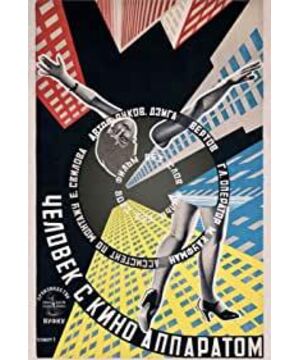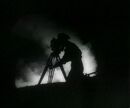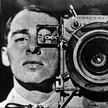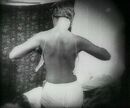By Dziga Vertov
Translation/MapleSaki
" The Man with a Movie Camera " took a lot more work than the previous film-eyed works . Looking at more locations and the complex technicalities of the organization at the time of filming can explain this. Montage experiments require extraordinary attempts. These experiments are ongoing.
"The Man with the Camera" is straightforward and creative. It stands out against the film distributor's " the more clichés, the better " slogan. It's the kind of slogan that keeps us film crews from thinking about taking a break, even when we're exhausted. We have to push the distributors, out of respect for the film, to put their slogans aside. The Man with the Camera needed the most creative presentation possible.
In Kharkov, I was asked, "Why did you, who liked those jumping subtitles, suddenly bring us The Man with the Camera - this movie without any text or subtitles?" My response was, "No, I never said I liked any of the subtitles - that was all made up by some critics."
Indeed, in the struggle to resolutely purify the language of cinema, to make it entirely independent of the language of drama and literature, the Cine Eyes cast aside studios, actors, sets, and scripts. Thus, in One-Sixth of the World , the subtitles are detached from the image, isolated from it, and construct a text-radio theme counterpoint.
"In The Eleventh Year , there is very little room for subtitles (the way the subtitle images are broadcast further underlines their unimportance), so even cutting out the subtitles doesn't make any difference to the film. any interference with the power of the
" Subtitles in a real cinema-object, in their concrete weight and practical sense, are like Marx's reference to gold in Timon of Athens in his analysis of money in Capital. (10 This is the case for the subtitles of "One Year") when most of these subtitles happen to be exact quotes, they represent the text of a book in its layout process." - Kinofront , No. 2, 1928 no.2 1928 )
Therefore, the complete absence of subtitles in "The Man with the Camera" is not unexpected, but has been prepared for in all previous experiments of the cinematic eye party.
"The Man with the Camera" is not only the performance of a practical achievement, but also a theoretical manifestation on the screen. That's why the public debate over the film in Kharkiv and Kiev has seen a bitter feud between art representatives from all sides. Disputes take place on several levels. Some people say "Man with a Camera" is an experiment in visual music, a visual concert. Others saw the film as a montage of advanced mathematics. Others claim that it is not "the original life", but a life they have never seen, etc.
In fact, the film is just the sum of the reality it is recorded on film, and if you want to think of it not just as a sum but as a product, a kind of "higher mathematics" based on reality . Each item and each element is a separate small file. They are interconnected, so on the one hand, the film will consist of only inter-segment connections, which at the same time coincide with visual connections. On the other hand, these connections will no longer require subtitles. Thus, the sum of all connections finally forms an organic whole.
This complex experiment was a success, and it was recognized by most of the comrades who expressed their opinions. First, it liberates us from the shackles of literature and drama , so we can witness 100 percent of the film. Second, it uses the "life" recorded by the camera (cine eye) to violently oppose the "life" seen by the imperfect human eye.
From Kino Eye: The Writings of Dziga Vertov
Originally published in the public account: Film Leaflet FilmBooklets
View more about Man with a Movie Camera reviews







